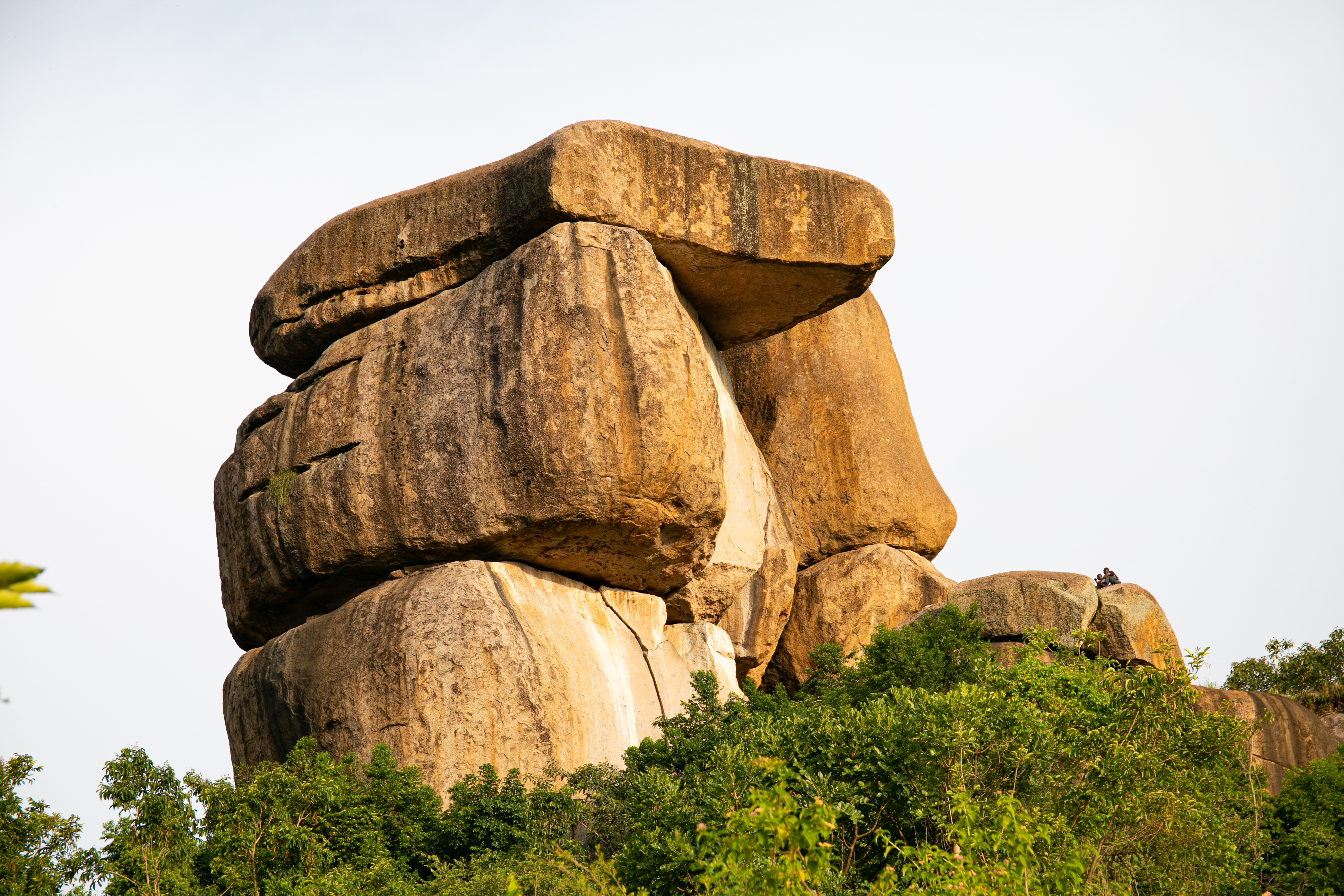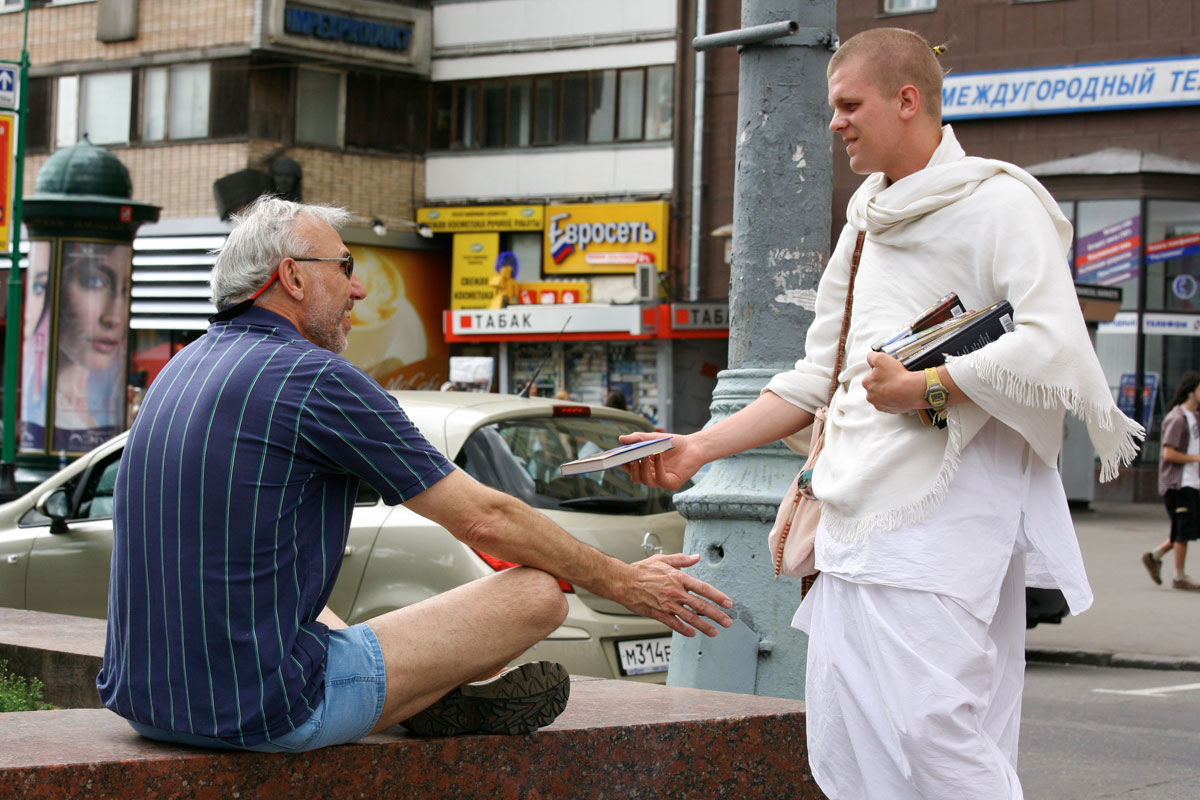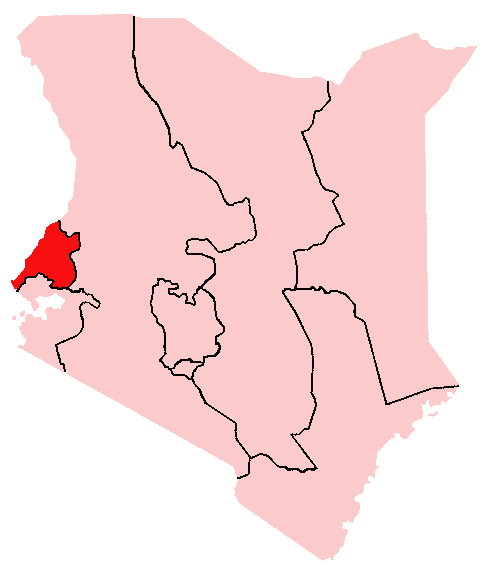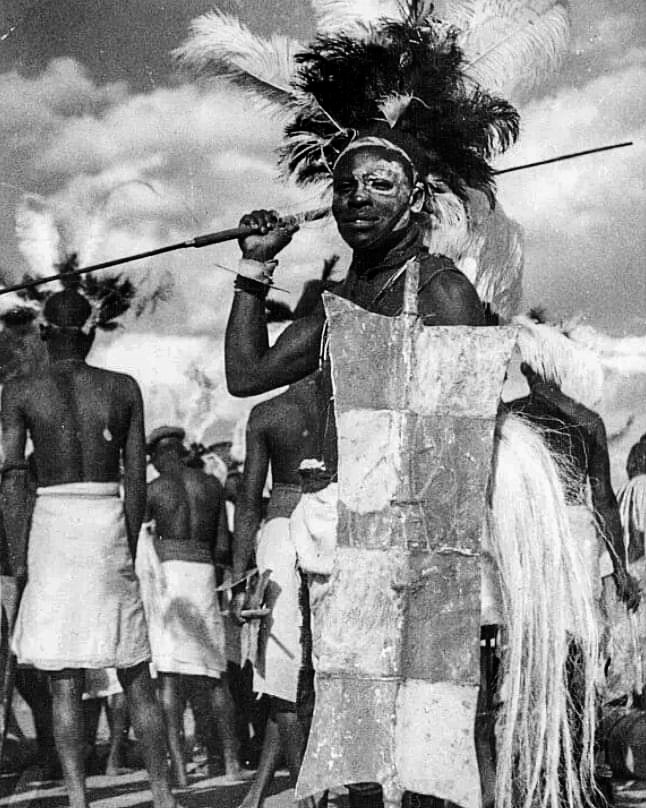|
Legio Maria
Legio Maria (ungrammatical Latin, "Legion of Mary")—also known as Legio Maria of African Church Mission, and Maria Legio—is an African initiated church or new religious movement among the Luo people of western Kenya. It emerged as an extension of an interpretation of the Three Secrets of Fátima to a new, albeit African, context. The religious movement was initiated by repeated appearances of a mystic woman to several Catholic Church members delivering messages about the incarnation of the Son of God as a black man. These appearances are said to have begun around 1938, almost simultaneous with the beginning of Edel Quinn's lay Catholic mission for the similarly named Legion of Mary to Africa. By the early 1960s, the movement had assembled a good number of catechists, acolytes, and believers in a spiritual return of Jesus Christ. The continuous expansion of this movement coupled with its belief in Simeo Ondetto as the returned Son of God led to theological tension, and eve ... [...More Info...] [...Related Items...] OR: [Wikipedia] [Google] [Baidu] |
New Religious Movement
A new religious movement (NRM), also known as alternative spirituality or a new religion, is a religious or spiritual group that has modern origins and is peripheral to its society's dominant religious culture. NRMs can be novel in origin or they can be part of a wider religion, in which case they are distinct from pre-existing denominations. Some NRMs deal with the challenges which the modernizing world poses to them by embracing individualism, while other NRMs deal with them by embracing tightly knit collective means. Scholars have estimated that NRMs number in the tens of thousands worldwide, with most of their members living in Asia and Africa. Most NRMs only have a few members, some of them have thousands of members, and a few of them have more than a million members.Eileen Barker, 1999, "New Religious Movements: their incidence and significance", ''New Religious Movements: challenge and response'', Bryan Wilson and Jamie Cresswell editors, Routledge There is no single, a ... [...More Info...] [...Related Items...] OR: [Wikipedia] [Google] [Baidu] |
Nyanza Province
Nyanza Province (; sw, Mkoa wa Nyanza) was one of Kenya's eight administrative provinces before the formation of the 47 counties under the 2010 constitution. Six counties were organised in the area of the former province. The region is located in the southwest part of Kenya around Lake Victoria, includes part of the eastern edge of Lake Victoria, and is inhabited predominantly by the Luo people and Kisii people. There are also Bantu-speaking tribes, such as the Kuria, and some Luhya, living in the province. The province derives its name from ''Nyanza,'' a Bantu word which means a large mass of water. The provincial capital was Kisumu, the third-largest city in Kenya. The province had a population of 4,392,196 at the 1999 census within an area of 16.162 km², or 12.613 km² of land. The climate is tropical humid. Counties The following counties make up the area of the former Nyanza province: Districts after 2007 Several new districts were created in 2007 ... [...More Info...] [...Related Items...] OR: [Wikipedia] [Google] [Baidu] |
KIT MIKAYI E
Kit may refer to: Places *Kitt, Indiana, US, formerly Kit * Kit, Iran, a village in Mazandaran Province * Kit Hill, Cornwall, England People * Kit (given name), a list of people and fictional characters * Kit (surname) Animals * Young animals: ** A short form of kitten, a young cat ** A young beaver ** A young ferret ** A young fox ** A young mink ** A young rabbit ** A young raccoon ** A young skunk ** A young squirrel ** A young wolverine * Old collective noun for a group of pigeons flying together Kinds of sets * Standard equipment and attire in sports: ** Kit (association football) ** Kit (cycling) ** Kit (rugby football) * Kit (of components), a set of components such as ** Electronic kit ** Kit car or component car **Testing kit (other) Other uses * Kit lens, a low-end SLR camera lens * Kit violin or kit, a small stringed musical instrument * Tropical Storm Kit, tropical cyclones named Kit * ''Whale (film)'', 1970, Bulgarian title See also * * * ... [...More Info...] [...Related Items...] OR: [Wikipedia] [Google] [Baidu] |
Mzungu
Also known as ''muzungu'', ''mlungu'', ''musungu'' or ''musongo'', () is a Bantu word that means "wanderer" originally pertaining to spirits. The term is currently used in predominantly Swahili speaking nations to refer to white people dating back to 18th century. The noun Mzungu or its variants are used in Kenya, Tanzania, Uganda, Malawi, Rwanda, Burundi, Democratic Republic of the Congo, Comoros, South Africa, Zimbabwe, Mayotte, Zambia and in Northern Madagascar (the word changed to "vozongo" in Malagasy, but locals will still understand the word mzungu) dating back to the 18th century. Etymology Literally translated meant "someone who roams around" or "wanderer." The term was first used in Africa to describe Arab, Indian and European traders and explorers in the 18th century, apparently because they moved around aimlessly. The word ''mzungu'' comes from Kiswahili, where or is the word for spinning around on the same spot. is Kiswahili for dizziness. The term is now ... [...More Info...] [...Related Items...] OR: [Wikipedia] [Google] [Baidu] |
The Glory Of God
''The'' () is a grammatical article in English, denoting persons or things already mentioned, under discussion, implied or otherwise presumed familiar to listeners, readers, or speakers. It is the definite article in English. ''The'' is the most frequently used word in the English language; studies and analyses of texts have found it to account for seven percent of all printed English-language words. It is derived from gendered articles in Old English which combined in Middle English and now has a single form used with pronouns of any gender. The word can be used with both singular and plural nouns, and with a noun that starts with any letter. This is different from many other languages, which have different forms of the definite article for different genders or numbers. Pronunciation In most dialects, "the" is pronounced as (with the voiced dental fricative followed by a schwa) when followed by a consonant sound, and as (homophone of pronoun ''thee'') when followed by a ... [...More Info...] [...Related Items...] OR: [Wikipedia] [Google] [Baidu] |
Melchizedek
In the Bible, Melchizedek (, hbo, , malkī-ṣeḏeq, "king of righteousness" or "my king is righteousness"), also transliterated Melchisedech or Malki Tzedek, was the king of Salem and priest of (often translated as "most high God"). He is first mentioned in Genesis 14:18–20, where he brings out bread and wine and then blesses Abram and El Elyon. In Christianity, according to the Epistle to the Hebrews, Jesus Christ is identified as "High priest forever in the order of Melchizedek", and so Jesus assumes the role of High Priest once and for all. Chazalic literature – specifically Targum Jonathan, Targum Yerushalmi, and the Babylonian Talmud – presents the name ) as a nickname title for Shem. Joseph Blenkinsopp has suggested that the story of Melchizedek is an informal insertion into the narration, possibly inserted in order to give validity to the priesthood and tithes connected with the Second Temple. It has also been conjectured that the suffix Zedek may have bee ... [...More Info...] [...Related Items...] OR: [Wikipedia] [Google] [Baidu] |
Joseph Ratzinger
Pope Benedict XVI ( la, Benedictus XVI; it, Benedetto XVI; german: link=no, Benedikt XVI.; born Joseph Aloisius Ratzinger, , on 16 April 1927) is a retired prelate of the Catholic church who served as the head of the Church and the sovereign of the Vatican City State from 19 April 2005 until his resignation on 28 February 2013. Benedict's election as pope occurred in the 2005 papal conclave that followed the death of Pope John Paul II. Benedict has chosen to be known by the title " pope emeritus" upon his resignation. Ordained as a priest in 1951 in his native Bavaria, Ratzinger embarked on an academic career and established himself as a highly regarded theologian by the late 1950s. He was appointed a full professor in 1958 at the age of 31. After a long career as a professor of theology at several German universities, he was appointed Archbishop of Munich and Freising and created a cardinal by Pope Paul VI in 1977, an unusual promotion for someone with little pastora ... [...More Info...] [...Related Items...] OR: [Wikipedia] [Google] [Baidu] |
Luhya People
The Luhya (also known as ''Abaluyia'' or Luyia) comprise a number of Bantu ethnic groups native to western Kenya. They are divided into 20 culturally and linguistically related tribes. ''Luhya'' refers to both the 20 Luhya clans and their respective languages collectively called Luhya languages. There are 20 (and by other accounts, 21, when the Suba are included) clans that make up the Luhya. Each has a distinct dialect best on thelocality of the speakers.The different dialects shows maturity of the luhya language. The Luhya language can only be equated to the Baganda,Soga and Lugisu language in Uganda. The Luhya culture is similary to Great lakes region Bantu speakers that stretches all the way from their anceral land in DRC. The word ''Luhya'' or ''Luyia'' in some of the dialects means "the north", and ''Abaluhya (Abaluyia)'' thus means "people from the north". Other translations are "those of the same hearth." The seventeen sub-tribes are the Bukusu (''Aba-Bukusu''), Idak ... [...More Info...] [...Related Items...] OR: [Wikipedia] [Google] [Baidu] |
Kamba People
The Kamba or Akamba (sometimes called Wakamba) people are a Bantu ethnic group who predominantly live in the area of Kenya stretching from Nairobi to Tsavo and north to Embu, in the southern part of the former Eastern Province. This land is called ''Ukambani'' and constitutes Makueni County, Kitui County and Machakos County. They also form the second largest ethnic group in 8 counties including Nairobi and Mombasa counties. Origin The Kamba are of Bantu origin.Joseph Bindloss, Tom Parkinson, Matt Fletcher, ''Lonely Planet Kenya'', (Lonely Planet: 2003), p.35. They are closely related in language and culture to the Kikuyu, the Embu, the Mbeere and the Meru, and to some extent relate closely to the Digo and the Giriama of the Kenyan coast. Kambas are concentrated in the lowlands of southeast Kenya from the vicinity of Mount Kenya to the coast. The first group of Kamba people settled in the present-day Mbooni Hills in the Machakos District of Kenya in the second h ... [...More Info...] [...Related Items...] OR: [Wikipedia] [Google] [Baidu] |
Kalenjin People
The Kalenjin are a group of tribes designated as Highland Nilotes and are descended from Maliri people ''(thus related to Daasanach of Ethiopia.)'' The Kalenjin are cousins with Datooga people of Tanzania and Malawi. In contrast, their designation groups them with other Nilotes including Maasai, Luo, Turkana and Nuer, Dinka among others. They are indigenous to East Africa, residing mainly in what was formerly the Rift Valley Province in Kenya and Eastern slopes of Mount Elgon in Uganda. Upon their arrival in the forest region of Mau, the Kalenjin assimilated the aboriginal hunter-gatherer people known as Okiek. They number 6,358,113 individuals as per the Kenyan 2019 census and an estimated 300,000 in Uganda mainly in Kapchorwa, Kween and Bukwo districts. They have been divided into 11 culturally and linguistically related tribes: Kipsigis (1.9 million), Nandi (937,000), Sebei (350, 000) Keiyo (251, 000), Marakwet (119, 000), Sabaot (296,000), Pokots (778, 000), ... [...More Info...] [...Related Items...] OR: [Wikipedia] [Google] [Baidu] |
Turkana People
The Turkana are a Nilotic people native to the Turkana County in northwest Kenya, a semi-arid climate region bordering Lake Turkana in the east, Pokot, Rendille and Samburu people to the south, Uganda to the west, and South Sudan and Ethiopia to the north. Overview According to the 2019 Kenyan census, Turkana number 1,016,174, or 2.14% of the Kenyan population, making the Turkana the third largest Nilotic ethnic group in Kenya, after the Kalenjin and the Luo, slightly more numerous than the Maasai, and the tenth largest ethnicity in all of Kenya. Although this figure was initially controversial and rejected as too large by Planning Minister Wycliffe Oparanya, a court ruling (February 7, 2012) by Justice Mohammed Warsame stated that the Kenyan government accepts the 2009 census figures for Turkana. They refer to themselves as ''ŋiTurkana'' (i.e. ngiTurkana, meaning the Turkana, or people of Turkan) and to their land as "Turkan". The language of the Turkana, an Eastern N ... [...More Info...] [...Related Items...] OR: [Wikipedia] [Google] [Baidu] |
Oxford University Press
Oxford University Press (OUP) is the university press of the University of Oxford. It is the largest university press in the world, and its printing history dates back to the 1480s. Having been officially granted the legal right to print books by decree in 1586, it is the second oldest university press after Cambridge University Press. It is a department of the University of Oxford and is governed by a group of 15 academics known as the Delegates of the Press, who are appointed by the vice-chancellor of the University of Oxford. The Delegates of the Press are led by the Secretary to the Delegates, who serves as OUP's chief executive and as its major representative on other university bodies. Oxford University Press has had a similar governance structure since the 17th century. The press is located on Walton Street, Oxford, opposite Somerville College, in the inner suburb of Jericho. For the last 500 years, OUP has primarily focused on the publication of pedagogical texts an ... [...More Info...] [...Related Items...] OR: [Wikipedia] [Google] [Baidu] |


.jpg)
.png)






.jpg)